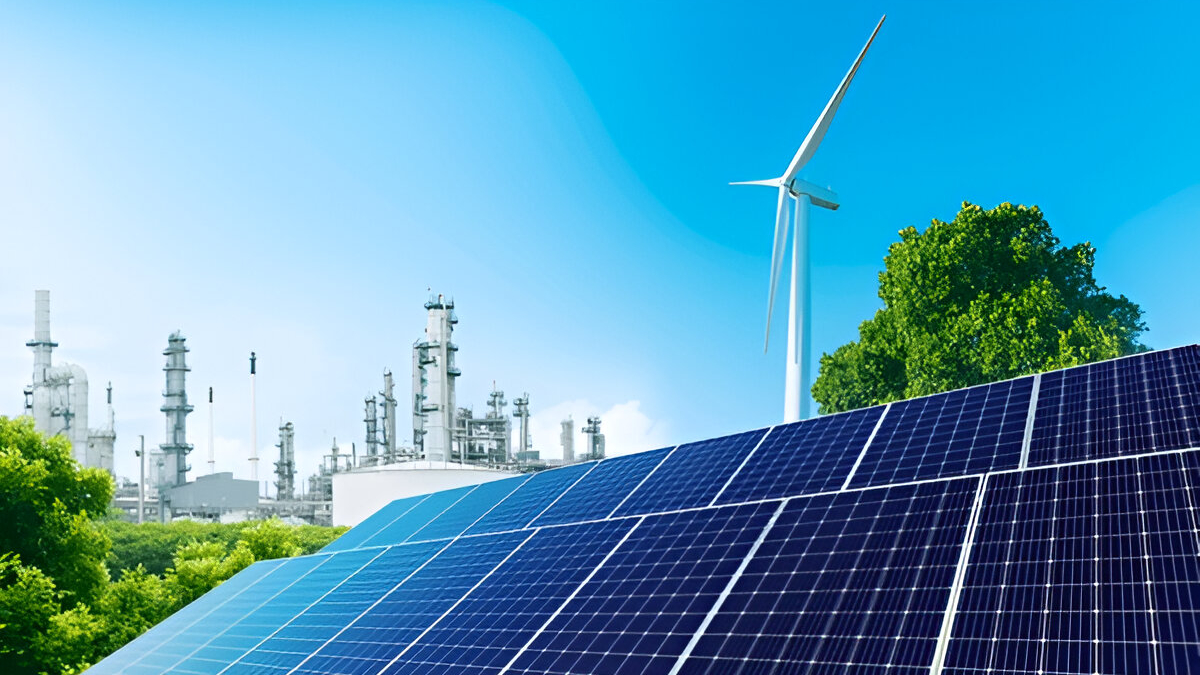If you’ve worked around industrial energy systems, you know efficiency is not just about running a turbine or boiler better. Captive power plants that run inside factories, refineries, or large campuses are changing. Lately the shift is toward hybrid renewable energy projects. This is practical for cost, reliability, and sustainability.
Captive Power Isn’t What It Used to Be
Captive power plants used to rely on coal, natural gas, or diesel. They were predictable and reliable. You knew fuel went in and power came out. Now the market and environment are forcing changes. Grid instability, rising fuel costs, and stricter emissions rules make the old ways expensive financially and reputationally. Hybrid renewable energy projects offer a way forward while keeping the control that captive power plants are known for.
By hybrid, I mean combining sources. Solar with wind, solar with storage, or wind with biomass backup. It is not just mixing renewables for the sake of it. The goal is complementary generation. Solar peaks midday, wind can work at night or in seasonal gusts. Batteries or small gas-fired backups can make the captive plant a self-contained energy system.
Why Go Hybrid at All
Some will say grid power is enough and fossil fuels are cheaper. That is true in many regions. But captive power is about independence. A blackout in a 24/7 manufacturing plant can stop production, spoil inventory, and cost millions. Hybrid systems reduce that risk. They also cut fuel costs. Solar panels and wind turbines have become cheaper. Batteries are more affordable. A well-designed hybrid system can reduce fuel use by 20 to 30 percent.
Design Challenges and Realities
Integrating renewables into captive power is not plug-and-play. Solar panels vary in quality, inverters need to match turbines, and load profiles matter. You need to plan capacity, backup needs, regulatory compliance, and land requirements.
Hybrid does not always mean zero emissions. If the storage or backup system uses diesel, there will still be emissions. Partial decarbonization is still a win if the system is integrated well. Pragmatic hybrids balancing cost, reliability, and emissions usually succeed better than systems trying to be perfectly green but risking downtime.
Control and Monitoring Are Game Changers
Modern hybrid plants rely on digital controls. Smart controllers can shift loads between solar, wind, storage, and conventional generation almost seamlessly. They optimize performance, reduce wear on generators, and sometimes allow selling extra energy back to the grid. You can prioritize fuel savings or battery use depending on needs.
Operators often underestimate this at first. But the systems can cut fuel usage by 25 percent in the first month. Humans still make strategy and maintenance decisions, while the machines handle optimization.
Location Matters, More Than You Think
A hybrid system that works in Gujarat might fail in Kerala. Wind patterns, solar irradiance, humidity, and grid reliability differ widely. Hybrid captive power projects cannot be standardized. Site assessments are mandatory. Without them, you risk overbuilding or underperforming.
Following a template from another project can backfire. Solar panels can get shaded, wind turbines may underperform, and batteries may degrade faster in hot or humid conditions. Context matters.
Financing and Policy Considerations
Hybrid projects cost more upfront than diesel setups. But policies and incentives are improving. Some states provide benefits for renewable capacity, captive power setups, or renewable energy certificates. These can reduce payback periods.
Focus first on operational savings and reliability. If incentives align with those goals, they help. If not, avoid letting subsidies drive technical design. Overbuilt systems chasing incentives often underperform.
Maintenance and Longevity
Hybrid systems require a new maintenance approach. Batteries degrade, inverters fail, wind turbines need upkeep, and solar panels need cleaning or repair. But overall maintenance can be lower if planned well because conventional generators run less. This reduces wear and tear. Predictive maintenance supported by monitoring software becomes more important.
Operators may need training to manage multiple energy streams. Switching from a single generator mindset to a hybrid approach takes time and adaptation.
Looking Ahead
Captive power plants are moving toward hybrid renewable energy projects. Cost pressures, environmental rules, and grid uncertainty are pushing the change. Hybrid systems provide resilience and financial sense even if fossil fuels are not completely eliminated. Companies adopting this now gain reliability, lower emissions, and energy cost savings.
Design errors, poor site assessment, or underestimating complexity can hurt returns. But careful planning can make hybrid captive power plants strategic assets. The real win is a smart, flexible system that reduces carbon footprint while remaining reliable.
Hybrid renewable energy projects give companies a choice. They can stick with predictable fossil systems or take control with diversified systems that cut costs and emissions. The tools and economics support this approach, and the reliability payoff is significant.
How Captive Power Plants Can Leverage Hybrid Renewable Energy Technologies

- Aarav51
- Oct 20, 2025 ·








